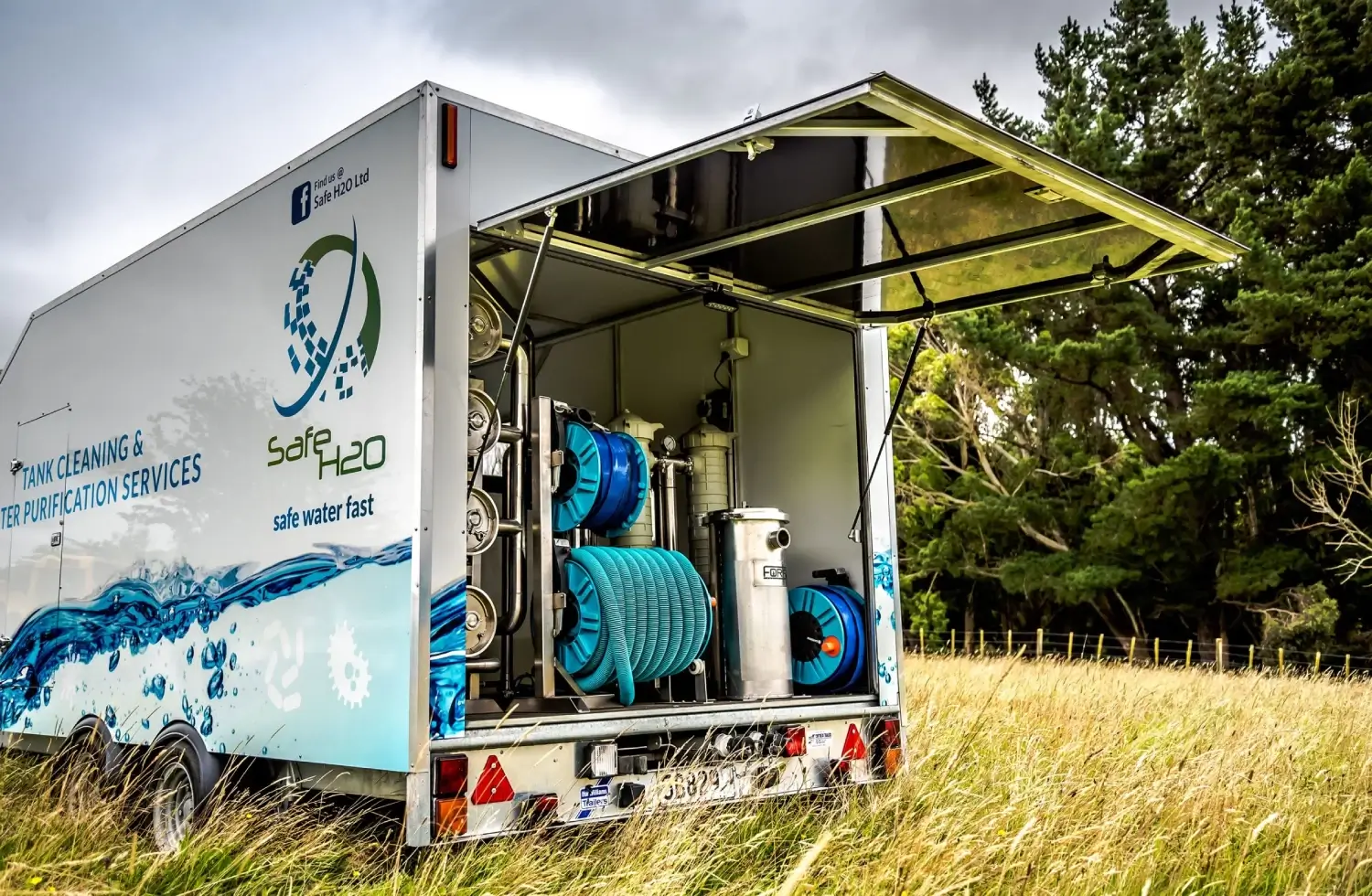Water Filtration
Emergency Water Filtration System
The provision of adequate quantities of safe water is a basic necessity and a key concern in any civil emergency situation. However, there are significant challenges in providing minimum standards of water supply in times of emergency.
The potential for the Safe H2O system to assist in times of civil emergency and humanitarian needs is impressive. Capable of processing up to 20,000 litres per hour, the system could solve emergency water challenges for over 20,000 people in a 24-hour period.
We are keen to work with organisations and governments that are seeking a practical solution that will really work, on the ground, when needed. We can be on standby to provide a service as and when needed.
Contact us now to be prepared for an emergency – call 0800 723 342.

MOBILE NANO FILTRATION UNIT
KEY FEATURES OF THE UNITS
- capable of producing safe water, fast from any fresh water source such as a river or lake
- pathogens and contaminants removed, including e-coli, norovirus, giardia, protozoa cysts significant flow rates
- Capable of providing up to 20,000 litres per hour, i.e. emergency supply of 15 litres to 32,000 people in a 24 hour period
- high pressure Nano pump delivers the water to the NFS-4-8040 Nano filter, this filter rejects hardness, colour, some salts and calcium, and softens the water
- can handle high turbidity levels
- runs on diesel generator, is fully mobile and is self-sufficient
- can be towed, transported via container or airlifted
- dosing system for eliminating pathogens, and oxidant where there is colour in the water (1 ppm foodgrade hydrogen peroxide)
- ability to measure the litres filtered

HOW DOES NANO FILTRATION WORK AS OPPOSED TO REVERSE OSMOSIS
Reverse Osmosis (RO) and Nanofiltration (Nano) are very similar, although Nanofiltration is the slightly newer technology. In appearance, they are virtually identical and both use essentially the same technology to remove impurities from water or other liquids.
In both systems, Membrane Elements (or membranes, or elements) are used to separate a liquid from contaminates. Membranes are basically filters with very small “openings” that prevent contaminates from passing through when the liquid that is being purified is “pushed” through the membrane.
Nano was developed primarily for drinking water applications because RO was found to remove some of the minerals in water that are considered beneficial for human consumption.
Nano allows these minerals to pass through the membrane with the water, but the Nano membrane will “block” pesticides and other contaminates that can be harmful to people.
Reverse Osmosis has been the traditional method for emergency water filtration due to the ability to desalinate water.
However the downside to reverse osmosis as a method of purifying drinking water is the removal of healthy, naturally occurring minerals in water.
The membrane of a reverse osmosis system is impermeable to natural trace minerals. These minerals not only provide a good taste to water, but they also serve a vital function in the body’s system.
Water, when stripped of these trace minerals, can actually be unhealthy for the body. Reverse osmosis also wastes a large portion of the water that runs through its system.
It generally wastes two to three gallons of water for every gallon of purified water it produces. Reverse osmosis is also an incredibly slow process when compared to other water treatment alternatives and requires significant maintenance.
These problems are not encountered with a nanofiltration system and hence this is why Safe H2O uses Nanofiltration to treat water. This is why Safe H2O is the cost effective way to clean your water tank.
The following chart demonstrates the effectiveness of Reverse Osmosis (RO) relative to Nanofiltration (Nano) and other common filtration technologies.

Book your water tank clean quickly and easily

